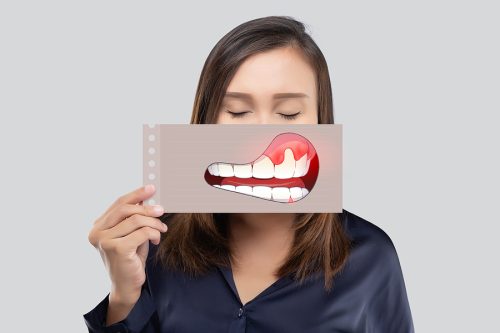Gum health is a vital aspect of overall oral hygiene, yet it is often overlooked until a problem arises. Many individuals may not recognize the signs of gum disease until they are faced with more serious issues. So, what is gingivitis? Understanding gingivitis is crucial for maintaining a healthy mouth and preventing more severe periodontal problems. This condition, characterized by inflammation of the gums, can lead to discomfort and complications if left untreated.
What is Gingivitis?

Gingivitis is a common and mild form of gum disease that occurs when the gums become inflamed due to plaque buildup on the teeth. Plaque is a sticky film of bacteria that forms on your teeth and gums. When not removed through regular brushing and flossing, this plaque can harden into tartar, which further irritates the gums and leads to more serious conditions if not addressed.
The condition typically manifests as redness, swelling, and bleeding of the gums, particularly when brushing or flossing. While gingivitis is often considered a reversible condition, it serves as a warning sign that should not be ignored. If left untreated, gingivitis can progress to periodontitis, a more severe form of gum disease that can lead to tooth loss and other health complications.
Causes of Gingivitis
Gingivitis can arise from various factors, many of which are related to oral hygiene practices. Understanding these causes is essential for prevention and early intervention. Here are some common contributors to gingivitis:
1. Poor Oral Hygiene
One of the primary causes of gingivitis is inadequate oral hygiene. When plaque accumulates on the teeth and gums, it can lead to irritation and inflammation. Failing to brush and floss regularly allows plaque to harden into tartar, which can only be removed through professional dental cleaning. Establishing a consistent oral care routine that includes brushing at least twice a day and flossing daily is crucial for preventing gingivitis.
2. Smoking and Tobacco Use
Smoking and other forms of tobacco use significantly impact gum health. Tobacco can inhibit blood flow to the gums, making it more difficult for them to heal from any irritation or infection. Smokers are at a higher risk of developing gingivitis and other periodontal diseases due to the negative effects of nicotine on oral tissues. Quitting smoking can improve gum health and reduce the risk of gum disease.
3. Hormonal Changes
Hormonal fluctuations can also contribute to gingivitis, particularly in women. Changes during puberty, menstruation, pregnancy, and menopause can increase gum sensitivity and make them more prone to inflammation. For instance, during pregnancy, increased hormone levels can lead to swelling and bleeding of the gums, making it essential for pregnant individuals to maintain diligent oral care.
4. Medical Conditions
Certain medical conditions can exacerbate the risk of gingivitis. For example, individuals with diabetes are more susceptible to gum disease due to higher blood sugar levels, which can impair blood flow and hinder healing. Additionally, autoimmune diseases can affect the body’s ability to fight off infections, further increasing the risk of developing gingivitis. It’s important for individuals with underlying health issues to be particularly vigilant about their oral hygiene and seek regular dental care.
Gingivitis Symptoms
Recognizing the symptoms of gingivitis is crucial for timely intervention and treatment. While some individuals may not experience noticeable symptoms in the early stages, others may notice changes in their gum health. Here are some common signs to look out for:
Common Signs
One of the most evident signs of gingivitis is swollen or inflamed gums. Healthy gums should be firm and pale pink, while gingivitis can cause them to appear red and puffy. Additionally, bleeding is a frequent symptom; gums may bleed during brushing or flossing, which is often the first noticeable sign for many individuals. If you observe any changes in your gums during your daily oral hygiene routine, it is essential to take note and act accordingly.
Additional Symptoms
In addition to swollen and bleeding gums, other symptoms may include persistent bad breath (halitosis). This unpleasant odor can result from the buildup of bacteria in the mouth and is often exacerbated by poor oral hygiene. Furthermore, you may notice changes in your gum color, shifting from the healthy pink to a darker red, indicating inflammation. In some cases, gum recession may also occur, where the gum tissue pulls away from the teeth, exposing more of the tooth structure.
When to Seek Help
If you experience any of these symptoms, it is vital to seek professional dental care. Early diagnosis and treatment can prevent gingivitis from progressing to more severe forms of gum disease, such as periodontitis. A dental professional can provide a thorough examination, assess your gum health, and recommend an appropriate treatment plan. Regular dental checkups play a critical role in monitoring your oral health, allowing for early detection and intervention of potential issues.
How is Gingivitis Diagnosed?
Diagnosing gingivitis involves a comprehensive evaluation by a dental professional. This process typically includes a dental examination and various diagnostic tools to assess the health of your gums. Here are the key steps involved in diagnosing this common condition:
1. Dental Examination

During your dental visit, the dentist or dental hygienist will perform a thorough examination of your teeth and gums. They will look for signs of inflammation, such as redness, swelling, and bleeding. The professional will also inquire about your oral hygiene habits, any symptoms you’ve experienced, and your medical history, which can provide valuable context for understanding your gum health.
2. Periodontal Charting
Periodontal charting is a critical component of diagnosing gingivitis. This process involves measuring the depth of the gum pockets around each tooth using a specialized instrument called a periodontal probe. Healthy gums typically have pockets measuring between 1 to 3 millimeters, while deeper pockets may indicate inflammation or disease. By charting these measurements, the dentist can determine the severity of your gum condition and whether it has progressed beyond gingivitis.
3. Additional Tests
In some cases, your dentist may recommend additional tests to better understand your gum health. This may include X-rays to assess bone health around the teeth and detect any underlying issues not visible during the physical examination. If necessary, the dental professional might also take samples of the bacteria in your mouth to identify specific pathogens contributing to gum disease.
4 Treatment Options for Gingivitis
Treating gingivitis is essential for restoring gum health and preventing the condition from progressing to more severe forms of gum disease. The treatment approach typically involves both professional care and improved at-home oral hygiene practices. Here are the primary treatment options for gingivitis:
1. Professional Cleaning
One of the first steps in treating gingivitis is a professional dental cleaning, also known as prophylaxis. During this procedure, a dental hygienist will remove plaque and tartar buildup from your teeth and gums using specialized tools. This cleaning helps to eliminate the irritants causing inflammation, allowing the gums to heal. In cases of more advanced gingivitis, your dentist may recommend scaling and root planing, a deeper cleaning that targets areas below the gumline to remove tartar and bacteria.
2. Improved Oral Hygiene Practices
In addition to professional cleaning, adopting a diligent oral hygiene routine is crucial for managing and preventing gingivitis. This includes brushing your teeth at least twice a day with fluoride toothpaste and using an antibacterial mouthwash to help reduce plaque buildup. Flossing daily is equally important, as it removes food particles and plaque from between teeth and along the gumline, areas that a toothbrush may miss. Regularly replacing your toothbrush every three to four months can also enhance the effectiveness of your oral care routine.
3. Lifestyle Changes
Making certain lifestyle changes can significantly improve your gum health. Quitting smoking and avoiding tobacco products can enhance blood flow to the gums, promoting healing. Additionally, maintaining a balanced diet rich in fruits, vegetables, and whole grains can support your immune system and contribute to better oral health. Staying hydrated is important as well, as it helps produce saliva, which plays a critical role in washing away food particles and bacteria.
4. Follow-Up Care
After initial treatment, follow-up care is essential for maintaining gum health and preventing the recurrence of gingivitis. Regular dental checkups—typically every six months—allow your dentist to monitor your progress and make any necessary adjustments to your treatment plan. During these visits, your dental professional will continue to assess your oral hygiene practices and provide guidance on how to maintain healthy gums.
How to Prevent Gingivitis
Preventing gingivitis is far more effective than treating it once it occurs. By incorporating simple yet effective practices into your daily routine, you can significantly reduce your risk of developing this common gum disease. Here are some key strategies for preventing gingivitis:
1. Daily Oral Care Routine
Establishing a consistent daily oral care routine is the foundation of gingivitis prevention. Brush your teeth at least twice a day for two minutes each time, ensuring that you cover all surfaces of your teeth. Use fluoride toothpaste to help strengthen tooth enamel and reduce plaque buildup. Flossing daily is equally essential, as it removes plaque and food particles trapped between your teeth and along the gumline. Consider using an interdental cleaner or a water flosser if traditional flossing is challenging.
2. Regular Dental Checkups
Scheduling regular dental checkups is critical for maintaining oral health and preventing gingivitis. Most dental professionals recommend visits every six months for a thorough examination and professional cleaning. During these appointments, your dentist can identify early signs of gingivitis and recommend appropriate treatment before the condition worsens. Early detection is key to preventing the progression of gum disease and protecting your overall oral health.
3. Nutritional Advice
Your diet plays a significant role in your oral health. Consuming a balanced diet rich in vitamins and minerals supports gum health and strengthens your immune system. Foods high in vitamin C, such as citrus fruits, strawberries, and leafy greens, can help maintain gum health by reducing inflammation. Additionally, calcium-rich foods like dairy products, nuts, and leafy greens are essential for strong teeth and bones. Limiting sugary snacks and beverages can also help reduce the risk of plaque buildup and cavities.
4. Education on Oral Health
Staying informed about oral health is an essential component of gingivitis prevention. Educate yourself about proper brushing and flossing techniques, as well as the signs and symptoms of gum disease. Share this knowledge with family and friends to encourage them to take proactive measures for their oral health. Awareness of the importance of maintaining good oral hygiene and recognizing potential issues can empower you and others to seek timely dental care.
Your Trusted Partner for Gum Health and Comprehensive Dental Care
At Avenue Dental Care, we understand the importance of maintaining healthy gums and overall oral hygiene. Our award-winning team in Spokane, WA, is dedicated to providing you with high-quality dental care tailored to your unique needs.
We pride ourselves on using the latest technologies and state-of-the-art dental equipment to ensure you receive the best possible treatment. From your first visit, you’ll experience our commitment to patient comfort and care as you meet our friendly staff and tour our welcoming office.
Don’t leave your gum health to chance. Trust Avenue Dental Care for your periodontal care and all your dental needs. We accept most major forms of insurance and welcome patients of all ages.
Schedule your appointment today and take the first step toward healthier gums and a brighter smile.

